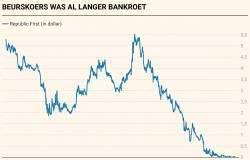May WTI crude oil (CLK24) this morning is down -0.19 (-0.23%), and May RBOB gasoline (RBK24) is down -3.53 (-1.29%).
Crude and gasoline prices this morning are moderately lower, with gasoline falling to a 1-week low. A stronger dollar today is bearish for energy prices. Also, an increase in Russian fuel exports is weighing on oil prices. In addition, weakness in the crude crack spread is bearish for crude as the crack spread today fell to a 2-week low.
Today’s US economic news was mixed for energy demand and crude prices. On the negative side, the Conference Board’s Mar US consumer confidence index unexpectedly fell -0.1 to a 4-month low of 104.7, weaker than expectations of an increase to 107.0. Also, the Mar Richmond Fed manufacturing survey unexpectedly fell -6 to -11, weaker than expectations of no change at -5. On the positive side, Feb capital goods new orders nondefense ex-aircraft and parts, a proxy for capital spending, rose +0.7% m/m, stronger than expectations of +0.1% m/m.
Crude has support from the recent Ukrainian drone attacks on Russian refineries that have damaged several Russian oil processing facilities, limiting Russia’s fuel exporting capacity. Bloomberg calculations show Russian refiners processed 5.03 million bpd of crude during March 14-20, down -400,000 bpd from the average for the first 13 days of March and the lowest in 10 months. JPMorgan Chase said it sees 900,000 bpd of Russian refinery capacity that could be offline “for several weeks if not months” from the attacks, adding $4 a barrel of risk premium to oil prices.
However, the disruption to Russian refiners has yet to affect Russian fuel exports because of the large number of Russian ships at sea transporting crude. Russia’s fuel exports in the week to March 24 rose +360,000 bpd from the prior week to 3.32 million bpd.
Crude oil prices are also seeing support from expectations that global crude supplies will remain tight as OPEC+ delegates are expected to keep crude production quotas unchanged when they meet next week. Several OPEC delegates said they see no need to recommend changes to the group’s crude production levels. OPEC+ will meet on April 3 to assess implementation of its crude output cuts, which are scheduled to remain in place through the end of June.
OPEC+ announced on March 3 that it would extend its current crude production cuts of about 2 million bpd until the end of June. The group said its crude production cuts will be “returned gradually subject to market conditions” after the second quarter. However, OPEC Feb crude production rose +110,000 bpd to 26,680 million bpd, a bearish factor for oil prices as Iraq and UAE continue to pump above their production quotas.
The recent strength of Chinese crude oil demand is bullish for prices. Last Monday’s government data showed that China processed a record 118.76 MMT of crude in January and February, up +3% from the same time last year. Also, Chinese fuel demand jumped, with expressway passenger volumes 54% higher than 2019 levels, while airlines saw 19% more people than the pre-pandemic peak.
Also, Vortexa said on March 4 that OPEC+ compliance with crude production cuts is still “questionable.” Vortexa said that Russian oil exports were about 500,000 bpd above the OPEC+ commitments, and there are “little indications that Russia is actively cutting either crude production or exports.” Bloomberg reported last Tuesday that Russia’s maritime crude oil exports in the week ended March 10 rose +590,000 bpd and that Russia’s flows were 420,000 bpd above Russia’s pledge.
Crude prices have underlying support from the Israel-Hamas war and concern that all-out war might spread to Lebanon. Hezbollah and Israel have traded fire almost daily since the Israel-Hamas war erupted on October 7. Also, the US and UK have engaged in airstrikes against Houthi rebels in Yemen in retaliation for Houthi attacks on commercial shipping in the Red Sea. Attacks on commercial shipping in the Red Sea by Iran-backed Houthi rebels have forced shippers to divert shipments around the southern tip of Africa instead of going through the Red Sea, disrupting global crude oil supplies.
An increase in crude in floating storage is bearish for prices. Monday’s weekly data from Vortexa showed that the amount of crude oil held worldwide on tankers that have been stationary for at least a week rose +0.1% w/w to 74.72 million bbl as of March 22.
Last Wednesday’s EIA report showed that (1) US crude oil inventories as of March 15 were -2.8% below the seasonal 5-year average, (2) gasoline inventories were -2.4% below the seasonal 5-year average, and (3) distillate inventories were -5.0% below the 5-year seasonal average. US crude oil production in the week ending March 15 was unchanged w/w at 13.1 million bpd, below the recent record high of 13.3 million bpd.
Baker Hughes reported last Friday that active US oil rigs in the week ended March 22 fell by -1 rig to 509 rigs, moderately above the 2-year low of 494 rigs posted on November 10. The number of US oil rigs has fallen over the past year from the 3-3/4 year high of 627 rigs posted in December 2022.
More Crude Oil News from Barchart
On the date of publication, Rich Asplund did not have (either directly or indirectly) positions in any of the securities mentioned in this article. All information and data in this article is solely for informational purposes. For more information please view the Barchart Disclosure Policy here.
The views and opinions expressed herein are the views and opinions of the author and do not necessarily reflect those of Nasdaq, Inc.
Tags: Crude Slightly Dollar Strength Increased Russian Fuel Exports
-




